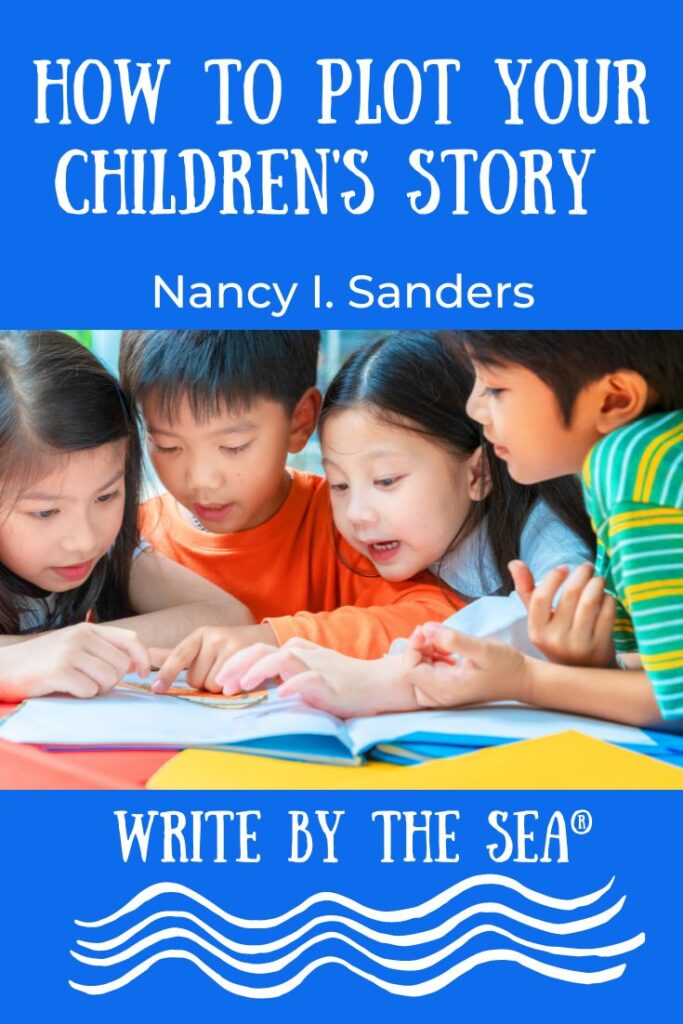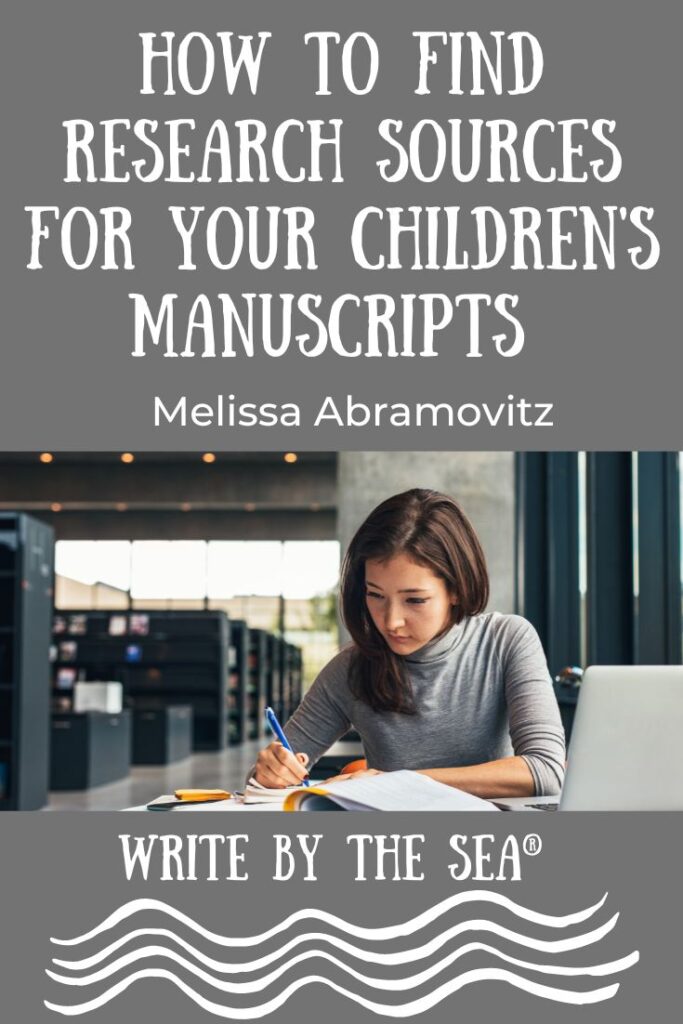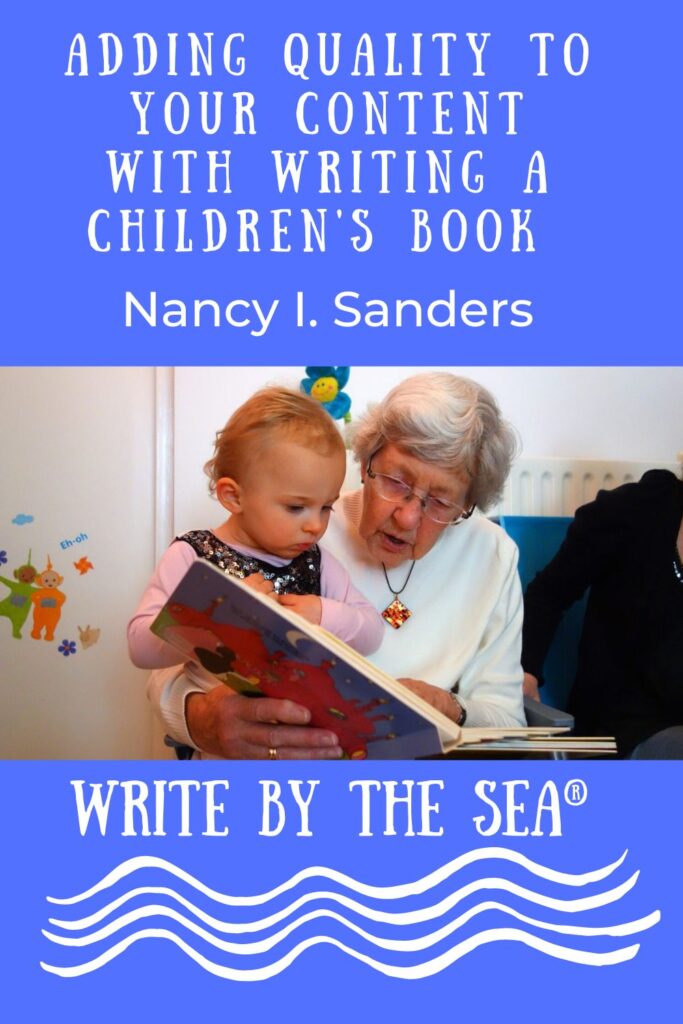by Nancy I. Sanders, Contributing Editor

How to Plot Your Story
When I make blueberry pancakes from scratch, I grab my cookbook and gather all the right ingredients: eggs, milk, butter, honey, flour, and blueberries.
Then I measure and mix and cook and serve up a perfect batch of yummy goodness.
When I start working on a new children’s story, I grab my brainstorming worksheets and gather ideas for the main character, the main story problem, secondary characters, and subplots.
Then I measure out doses of kid-appeal and mix them all together and write my drafts until I can serve up a delicious story.
When I’m making blueberry pancakes, however, I don’t get out the peanut butter.
Even though peanut butter might be scrumpdillyicious, it doesn’t really belong in my blueberry pancake recipe.
And when I’m mixing together the ingredients in the mixing bowl, I don’t put in pieces of chopped up steak.
Even though lots of people love steak, it wouldn’t be the right thing to put in my pancakes.
I don’t even add in potato chips because even though potato chips are one of my most favorite foods of all, they have no purpose going into a pancake recipe.
I save potato chips for beach barbecues with my friends.
Writing is like that.
When we’re brainstorming ideas for a children’s story, it’s easy to mix in fun ideas for secondary characters and fascinating subplots.
But not just any secondary character and subplot is a good ingredient for your particular story.
Each one must work together to influence your main character and main story problem.
If it doesn’t, either revamp it in such a way that it does or chop it out to use in a different story.
For example, if your main character is going to grow up to be a princess but a fire-breathing dragon is determined to stop her, you will want to develop character traits or character tags for her.
But don’t just give her random traits that have no purpose.
Give her a character trait or character tag that will help her along her journey.
She could love to write poetry, for instance, so at some point she is actually saved from the fire-breathing dragon because she writes him a poem that endears him to her forever.
And when brainstorming secondary characters, don’t just pick any old character to add to your story.
That would be like tossing in chunks of steak to my blueberry pancake mix.
Instead, pick secondary characters who work to influence your main character or main story problem in significant ways.
For example, instead of just putting any old Prince Charming in your princess story, make him a prince who is terrible at jousting but who learns how to joust (at the peril of losing his head!) so he can protect the princess from the fire-breathing dragon.
Subplots work the same way.
If your young princess has to find her way through a dark underground maze to escape from the fire-breathing dragon, choose subplots that work to help her or hinder her along the way.
For example, there could be a poor woodcutter who has discovered gold in the stream near his cabin so he starts digging for gold and causes the roof to cave in on the tunnel the princess is running through.
What happens if you’re in the middle of your story or have even completed the first (or multiple) draft(s) and you realize you have something that resembles some sort of blueberry steak pancake brownie?
Don’t despair!
Just go back in and make sure each secondary character and each subplot impacts the main character and the main story problem or plot in a very significant way.
In most cases, you won’t need to hit the delete button (however sometimes it’s the only choice to take).
Simply give each secondary character and subplot an important purpose for being in your story that directly influences your MC and main problem.
Just as when baking or cooking a recipe, every ingredient works together to make the final product delicious, when concocting a story, every ingredient works together to make your story a success.
With careful planning your story will become as scrumptious as the prize-winning pancake recipe in the community cookbook contest.
About Nancy I. Sanders


It’s hard work, yes, but it’s also lots of fun and very, very rewarding.
Learn tips of the trade and secrets of success in her Yes! You Can series of how-to books for children’s writers. www.nancyisanders.com.
For more tips on writing, get Nancy’s how-to book for children’s writers, Yes! You Can Learn How to Write Children’s Books, Get Them Published, and Build a Successful Writing Career at http://yesyoucanlearn.wordpress.com





